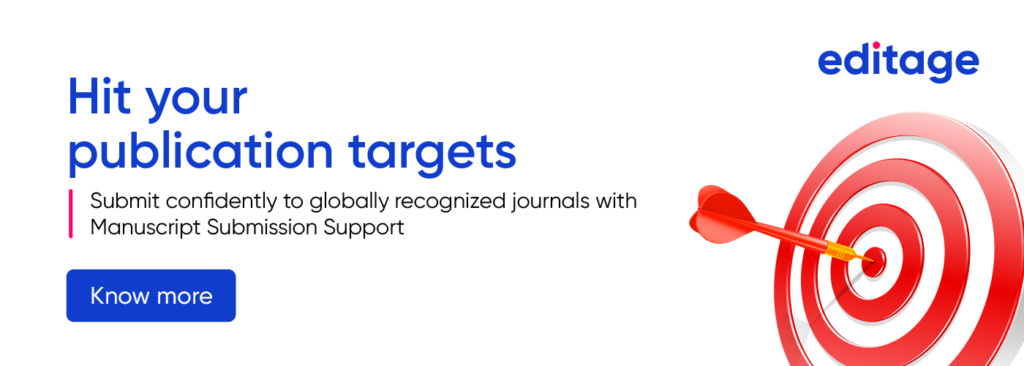
|
Getting your Trinity Audio player ready...
|
In the competitive world of academia, the adage “Publish or perish” is a stark reminder of the importance of sharing your research findings with the world. Academic publishing is not just a means of disseminating knowledge; it’s a way to establish yourself within the scientific community, foster collaborations, and contribute to the advancement of your field. Navigating the publishing process can be daunting, especially for new researchers. This comprehensive guide aims to demystify the journey from manuscript preparation to successful publication, offering expert guidance to ensure your success
Preparing Your Manuscript: The Foundation
Before embarking on the publishing journey, it’s crucial to ensure the foundation of your work is solid. A robust research process and an accurately polished final product are prerequisites for a successful publication. Your research should stand up to scrutiny, and your manuscript must convey your findings clearly and accurately.
Adhering to the style and submission guidelines of your target journal is paramount. Mistakes in writing can detract from the impact of your work. Fragments, long sentences, misplaced modifiers, and other grammatical errors can obscure your message. To avoid these pitfalls, ensure a strong command of language and grammar, paying attention to details like apostrophes, commas, and spelling.
Peer Review: The Crucible of Quality
Most academic publishing involves a rigorous peer review process, a crucible where your work’s quality is assessed before publication. Once your manuscript is submitted, experts in the field will critically evaluate its validity, significance, and methodology. Matching your work to the specific subject area of the journal is crucial for acceptance.
Crafting Your Path to Publication
The path to successful publication is often paved with writing and revising. Here are some steps to consider:
-
-
Writing Strategy:
Focus on constructing a logical narrative that conveys your research’s significance. Don’t feel compelled to write and edit simultaneously—start by getting your ideas on paper, then refine them.
-
-
-
Structural Approach:
Begin your draft with headings and sub-headings. Note additional ideas for later development. This strategy maintains your writing flow and prevents creative blocks.
-
-
-
Clarity of Purpose:
Clearly state your main ideas or arguments. Your abstract and introduction should succinctly present the purpose of your work. The thread of your argument should weave through different sections of your paper.
-
-
-
Peer Input:
Before submitting, have a colleague review your work for readability and coherence. External feedback can highlight areas for improvement.
-
Submitting your manuscript to the right journal is pivotal. Here’s what you need to consider:
-
-
Journal Selection:
Browse recent issues to confirm alignment with your topic and quality. Selecting the right journal enhances the chances of acceptance.
-
-
-
Submission Protocol:
Follow the journal’s submission instructions meticulously. Ignoring guidelines can waste both your time and the editors’.
-
-
-
Cover Letter:
Use the cover letter to provide a broader context for your work. Avoid restating your abstract; focus on highlighting the big picture.
-
-
-
Context Matters:
Clearly contextualize your research within the existing scholarly landscape. Identify the gaps your work addresses, showcasing its relevance.
-
Mastering Reviewer Feedback
Receiving reviewer feedback is a crucial aspect of academic publishing. Here’s how to tackle it:
-
-
Thoughtful Responses:
Take time to understand and process feedback. Draft a considered response after discussing the comments with peers.
-
-
-
Revision and Resubmission:
Revising your manuscript based on reviewer feedback is a crucial step. Remember, you’ve already surmounted significant hurdles in the process.
-
-
-
Constructive Challenges:
If you have valid justification, it’s acceptable to challenge reviewers’ suggestions. A clear, rational explanation can sway editors.
-
Choosing the Right Publisher
Selecting the right publisher ensures your work reaches the right audience:
-
-
Audience Alignment:
Your publisher’s readership should align with your target audience.
-
-
-
Reputation Check:
Consider the publisher’s reputation, often indicated by metrics like Impact Factor.
-
-
-
Rights and Process:
Understand the publisher’s editorial and peer review processes. Choose a publisher that offers your preferred peer review type.
-
-
-
Reach and Accessibility:
Ensure the journal is indexed, facilitating discoverability. Open-access journals offer wider accessibility.
-
Conclusion:
Navigating the academic publishing landscape may seem complex but armed with the knowledge and strategies outlined in this guide, new researchers can confidently embark on their publishing journey. From crafting a well-structured manuscript to effectively handling reviewer feedback and selecting the right publisher, each step contributes to your success in the world of academic publishing. Remember, publishing isn’t just about getting your work out there; it’s about contributing to the scholarly dialogue, establishing your reputation, and driving the progress of your field.
Click here to know more about our services: https://www.editage.us/services/research-paper-manuscript-publication-support-services










Leave a Reply